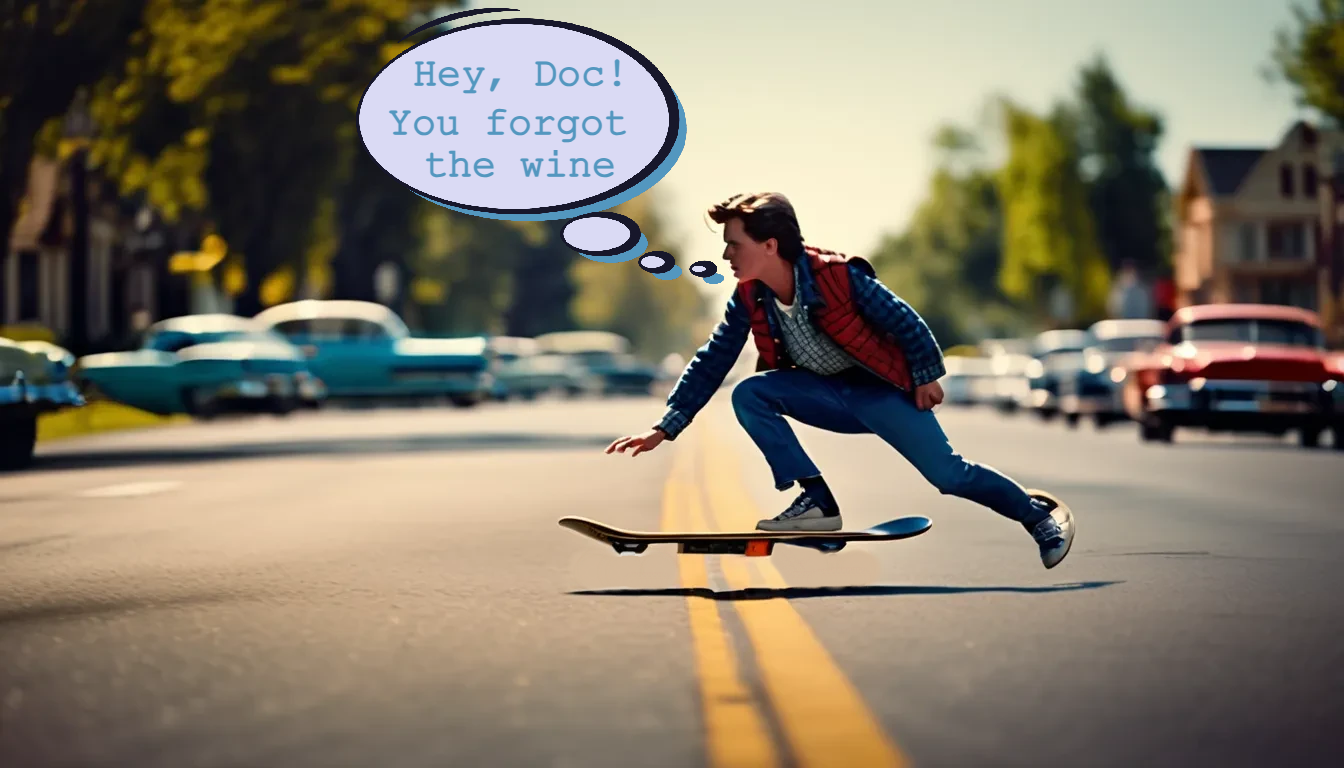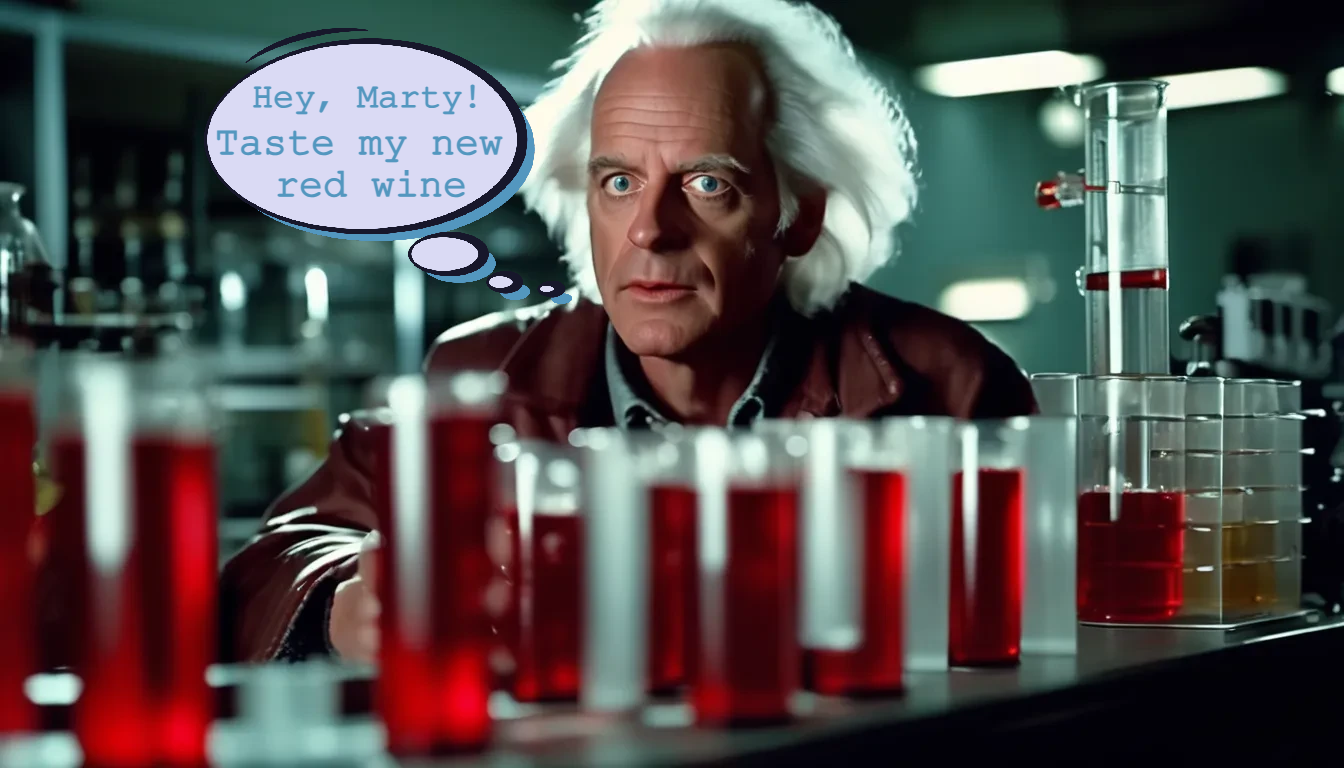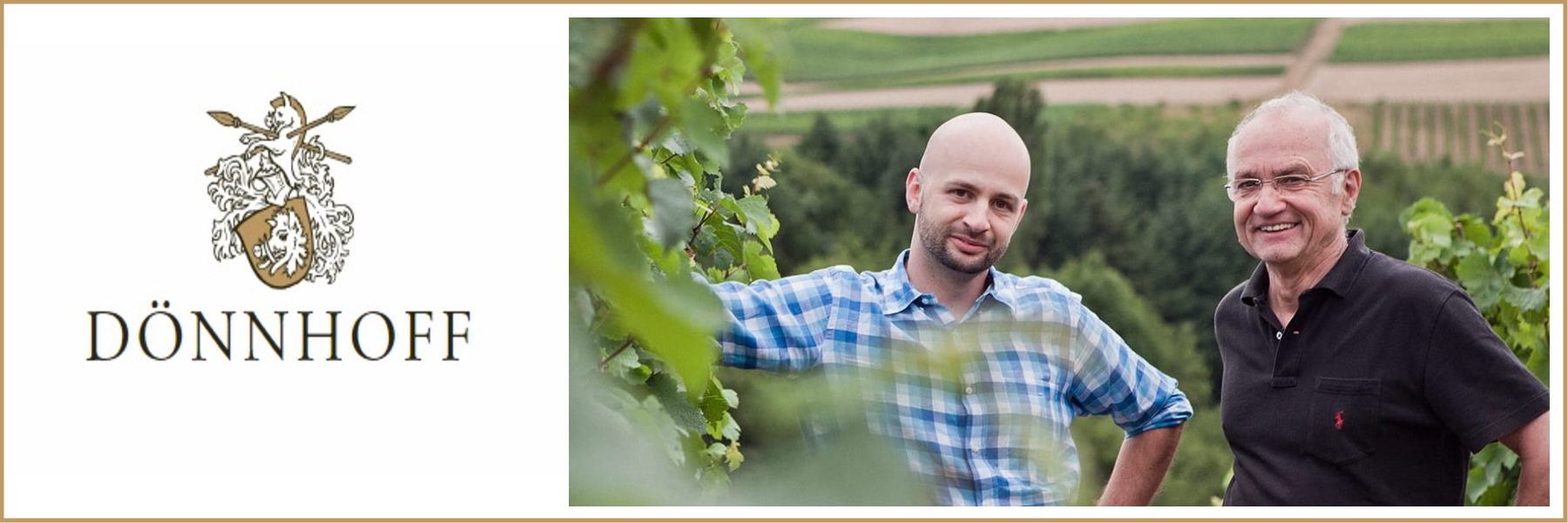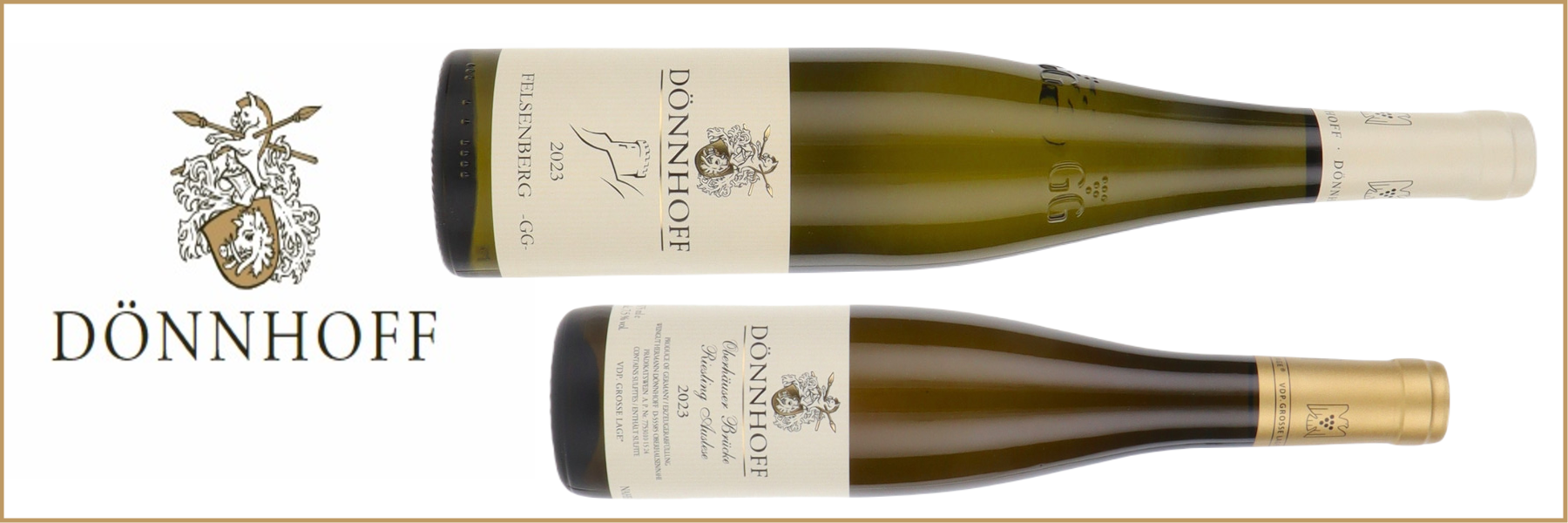It's 2025... Blow your trumpet and pop that cork!
But what does the future hold?
It's one of the questions we'd all like answered.
So, not being in a position to immediately put the world to right in this blog, let's just look at the prospects for wine production around the world. If you feel the need to discuss this (or anything else) with us, come into the shop sometime, and we'll be happy to chat about it with you. We've got some comfy chairs you can use and there might even be a bottle of something open for tasting.
Our expansive roof solar panels will be keeping the lights on in the wine studio and the new "flux capacitors" are being installed in our fleet of vans as we speak. Each one uses the necessary 1.3GW of power to enable instantaneous travel to anywhere in the country, arriving exactly at the moment you need your wine to arrive in time for parties and business functions.
If you've seen the "Back to the future" films, you'll appreciate how it all works, so I won't go into the technical details. Suffice to say, it's all very "green", and uses all the old, used teabags from the kitchen as fuel. "Chip-fat" bio-diesel is so last century. You've got to move with the times!
Just imagine if you could fire up the DeLorean and go back, or forward, in time to experience how wines used to taste, or discover the newest trends in the far and distant future. I'd love to try the wines made by the ancient Romans in their UK vineyards which would have been planted up to two millennia ago, or, moving to the distant future, try the latest vintage of sun-baked Hebridean Malbec. Who needs malt whisky when the Scottish reds are considered world class?

It's surprising how trends in winemaking and wine styles have changed over the years, with many traditional European wines being derided for their abysmal quality and non existent fruit flavours. This was the time when TV programmes featuring the likes of Oz Clarke and Jilly Goolden reigned supreme, with the wine-drinking public lapping up every review and, as a result, the shelves were stripped bare in outlets such as Oddbins (particularly for New World wines) and Sainsbury (for own label brands). Nobody else got a mention except for the occasional tip for the long defunct Unwin's, Victoria Wines and Peter Dominic high-street chains. Now I'm showing my age. There were also far more newspaper wine critics writing up glowing reviews praising the big name suppliers' wines. Jacob's Creek and Wolf Blass "Yellow Label" wines actually came from their original Barossa vineyards and cost pennies to buy (well it seemed like they were that cheap because they were always on offer somewhere). You could regularly buy various bottles of wine on a "2 for a Fiver" deal in the 80s.
The downside of these modern, fruit-bomb style wines was the the fact that they were chemically over-manipulated with cultured yeasts used to start the fermentation and various different enzymes and other chemicals added to artificially control the acidity and sulphite levels. These "everyday" wines needed to be "safe" (many wine brands tasting the same as each other) and have a long shelf life to keep the supermarkets happy (lots of added sulphites to aid in preservation, but giving drinkers a thumping headache from the worst examples). Barrel ageing flavours could be added by dunking "wood chips" in the wine vats, or even inserting chemical flavouring compounds (more "E" numbers) giving very harsh results. Basic Blossom Hill Californian red (sold on 3 for £10) was a particularly egregious example from the time and it managed to be one of the biggest selling wines in the world! It shows what the majority of drinkers were prepared to accept because the market was so driven by selling at cheap prices.

Big and bold, super ripe and oaky wines were in massive demand at this time. If one glass of Aussie red failed to put you into a state of instant drowsiness, it was considered to be a light-weight, and trying to be too European in style.
As for the whites, "chewing-a-plank" Chardonnay was the customer favourite. New Zealand Sauvignon hadn't yet crossed the equator and Pinot Grigio and Prosecco hadn't been heard of by anyone unless they'd been on an exotic holiday to Venice. Your parents were probably still big fans of semi-sweet, generic German wines which had never seen a Riesling grape, although they thought that's what the winemakers used in these vinous abominations costing £1.99/bottle (or less) in the supermarkets. Don't even mention Liebfraumilch. No, seriously, don't go there.
Speaking of Riesling, now is the time to mention that, in my opinion, this grape can be used to make the greatest white wines in the world. From dry to sweet, you can find wines for drinking today, or given decades of ageing, they are jaw-droppingly stunning. When you find the right one, you will be converted, I promise you.
If you want to try the best, swap your old "Niersteiner Gutes Domtal" (probably an inferior Silvaner/Muller-Thurgau blend) for a single vineyard Riesling from the Nierstein Pettenthal or Hipping. Want a real Mosel wine? Don't make do with a "Piesporter Michelsberg" (highly unlikely to contain any actual Riesling), but search for a genuine Piesporter Goldtröpfchen from the spectacular, sweeping slope opposite the village itself. These are the wines the Germans tend to keep for themselves!
To experience the quality of wine made in an ultra traditional way, with a history of winemaking going back over many centuries, it's got to be "producer, producer, producer" foremost in your search. Luckily, for those of us in the UK who appreciate fine Riesling, there are some top producers who sell their best wines outside of the region. One of Frazier's favourites is the remarkable house of Dönnhoff, from the Nahe valley. Good news! Their beautiful 2023 vintage is now available to buy from us. The range made by Cornelius and his father, Helmut is huge, but our allocations are small, so check out the selection before the collectors realise the new wines have been released onto the market. We don't want you to miss out. I've got my eye on a few special bottles to stash away myself.
Famous for their exceptional, sweet, Oberhäuser Brücke Riesling Eiswein wines (usually around £300 for a half bottle!) and their dry, single vineyard, Erste Lage & Grosses Gewächs Riesling (equivalent to Premier & Grand Cru sites), everything from Dönnhoff is worth buying. All are highly acclaimed by the critics. Read their reviews and tasting notes under each individual wine entry on our website.
Helmut says, “Extraordinary wines are based on extraordinary vineyards", and the 28ha owned by the Dönnhoff family are based on sandstone, weathered slate and volcanic soils. 80% is planted to Riesling with the remaining 20% comprising a mix of Pinot Blanc and Pinot Gris. These vines are old, ranging from 15 to 65 years of age.
Winemaking at the estate utilises large, old barrels (foudres) made of German oak, alongside modern, stainless steel vats. Everything is worked by hand in the vineyards.
Based in the small town of Oberhäusen, the family's vineyards are situated along the River Nahe (a tributary of the Rhine), around 75km south-west of Frankfurt in the south of Germany.
These days, many of the world's best wineries are going back to using traditional methods, with sustainable farming (often with organic/biodynamic practices), combining both minimal handling and intervention in the winemaking process with a desire to show a sense of place with a profound mineral character in their wines.
If you want to experience a Hebridean Malbec, I can't recommend any to you at the moment, as it's too cold up there to grow almost anything of worth. A reputation for rain and snow is not conducive to viticulture and, if global warming is going to have any effect, don't hold your breath for a quick result. You're going to need to find a working DeLorean, and that's a rare beast, too.
Great Scott, look out for "Back to the Future IV" for the next exciting installment from Marty and the Doc...



